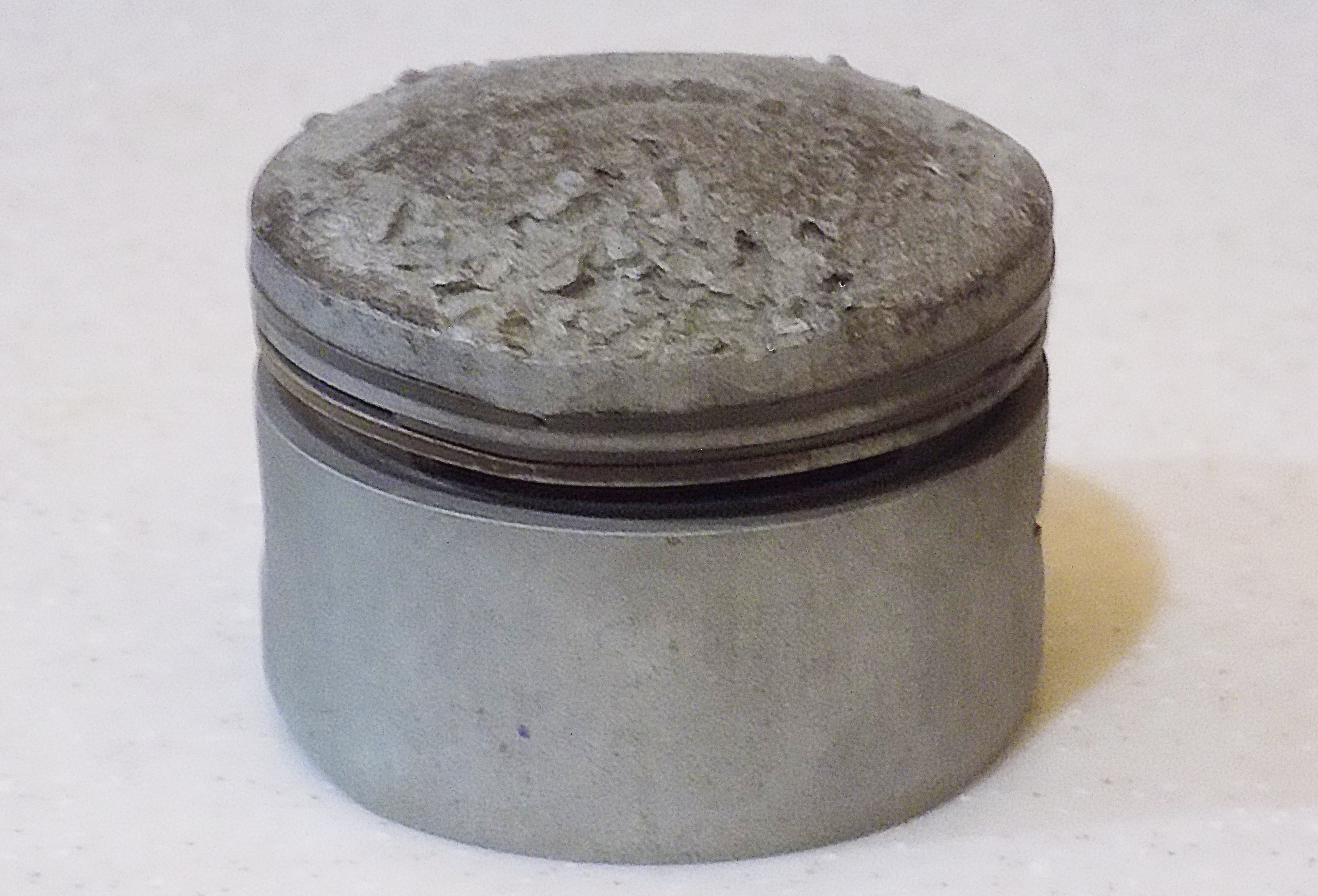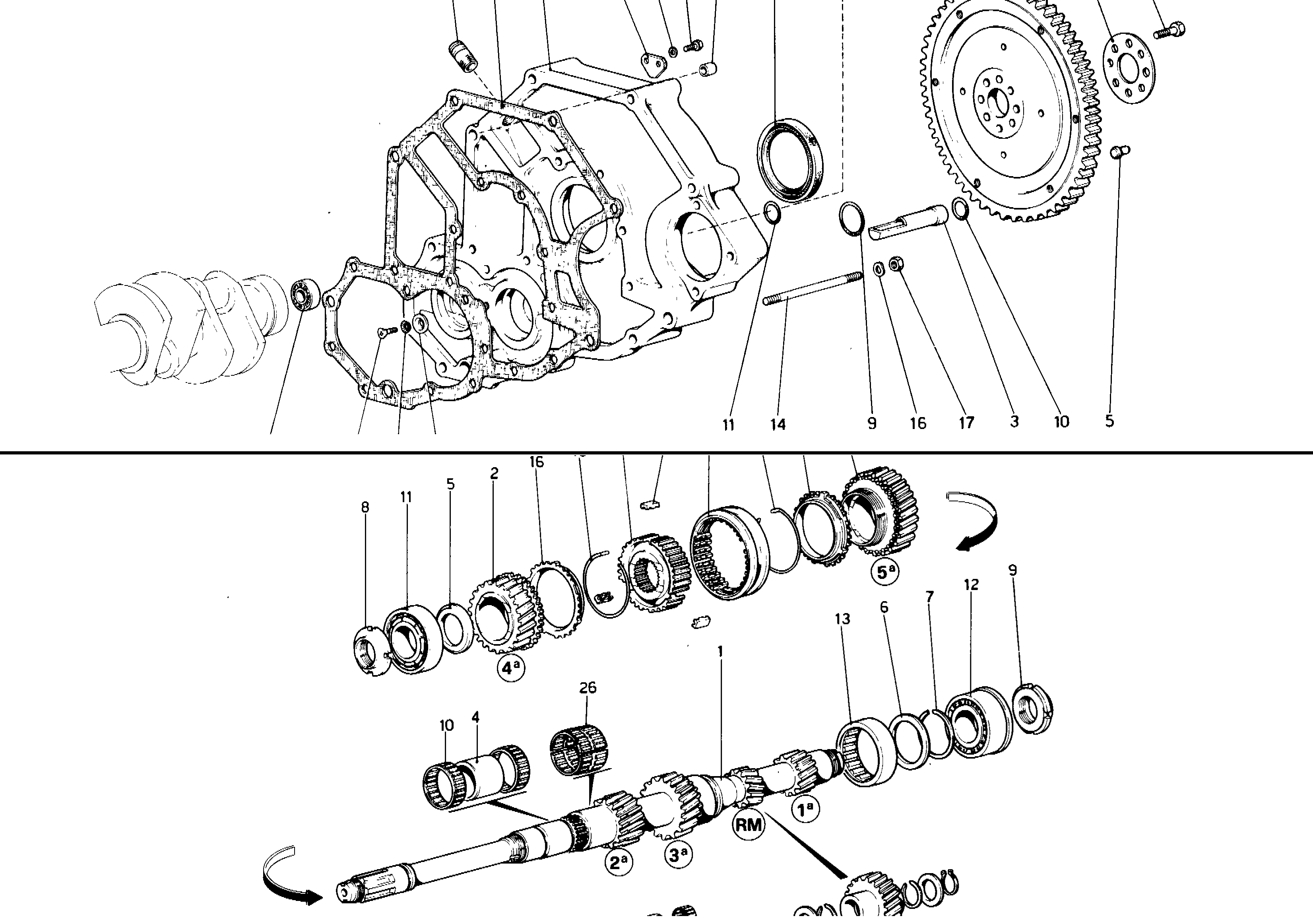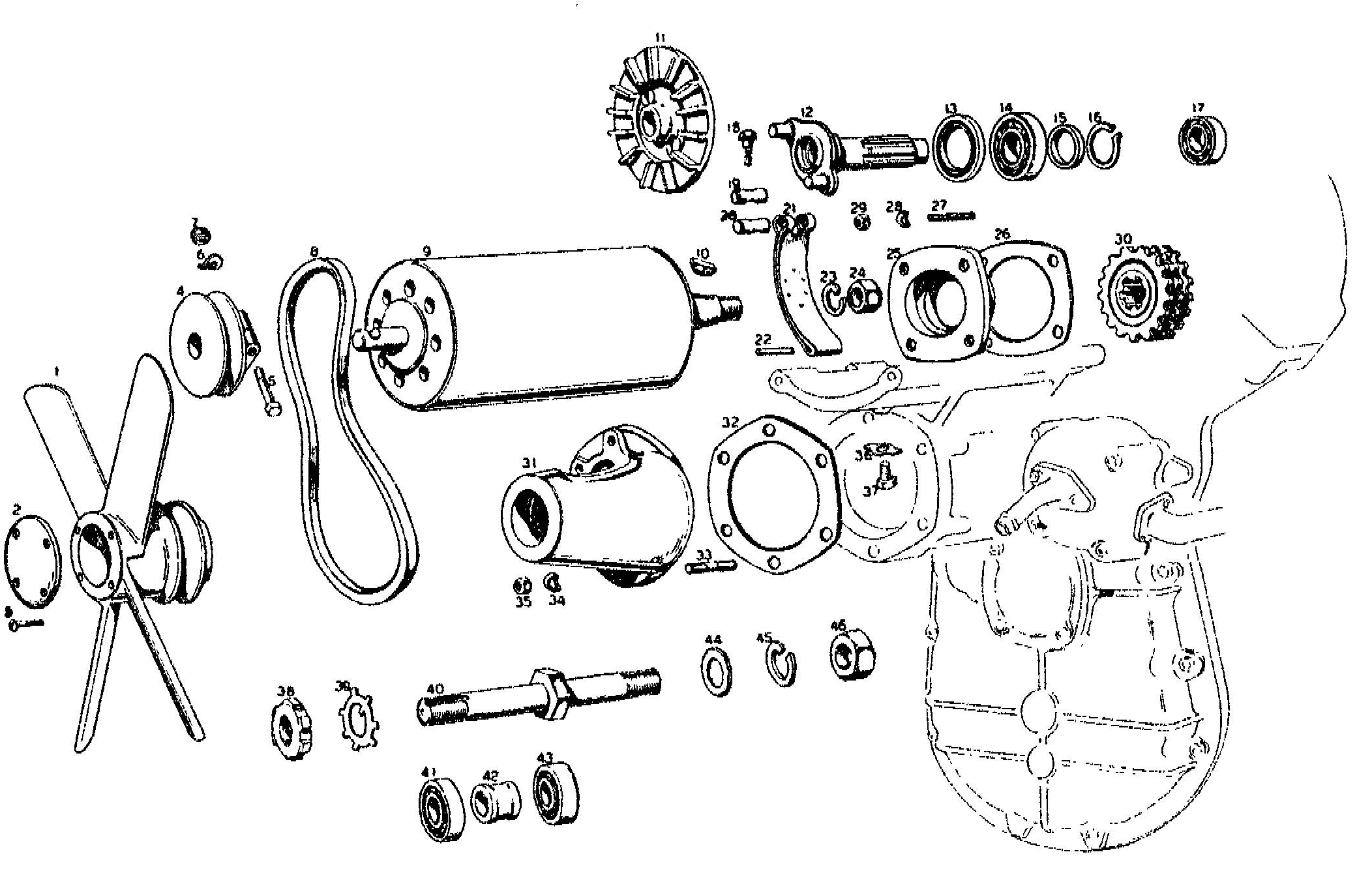Service Challenges

Jim Weed
Volume 50 Issue 09
May 10, 2025
When you take your Ferrari in for service it takes a team to affect a successful repair. Your service manager plays a key part in a successful outcome. The car also needs to be cooperative.
During the years I’ve been involved with Ferrari I have seen and done many different things.
Since most of these situations happened many years ago, I’m pretty sure the statute of limitations has run out.
Life is full of experiences and since mine are surrounded with automobiles it is those memories that become fodder for future articles.
A long time ago, about 1982, I bought my second Ferrari. The first one I parted out, so I never drove that one. For those who are keeping track, I wrote ‘A 250 GTE Story - The Final Disposition of S/N 3489 GT’ in Volume 46, Number 4 in February of 2021.
My second Ferrari was a 330 GT, Series I, S/N 6259 GT with four headlights. It was Anthracite with red interior. I thought it was a great combination that helped soften the body shape as the four-headlight setup was not very popular.
It was a theft recovery that I could buy cheap. I think I paid something like $5,000. It had some minor front damage on the fender, bumper and parking light. The worst part was the rear differential had been damaged.
The best speculation was after being stolen the joy riders had bumped something and then did donuts in a parking lot until the differential let go.
Front bumpers in 1982 were close to being unobtanium but we had parking lights in stock. I should mention here that I was working for Lyle Tanner Enterprises in Carson, California at the time. I had good access to parts.
The differential was disassembled, it was the early locking type with dogs instead of plates. Clearly it could not hold up to the abuse it had encountered.
I could have come up with the parts to repair, but I had a perfectly good rear axle assembly waiting for a customer.
Remember the GTE? I was parting it out, and the GTE was almost identical to the 330 GT unit.
A quick switch of the u-joint yoke and voila! A GTE is now the same as a 330! Originality and matching numbers would be far into the future. Besides it was just a 330 GT.
My now-moving Ferrari could be taken to the body shop to have the fender pushed back out, the bumper pounded back into shape and the parking light replaced.
It was a glorious day when I picked it up from the body shop fully repaired and looking like nothing had ever been damaged.
I was driving MY Ferrari, the first one I could rightly say was mine! As I neared home, I heard the engine make this sound. It was just one little skip of the engine. One little spit and then it did it again, what the heck is that?
Then the noise started, it was a bag of marbles rattling inside the engine. I couldn’t grab the key fast enough. My new Ferrari had something terminal sounding in the engine.
I had driven it about five miles in total and now it was broken. Again.
The repair is another story that I may relate to in another article, but not to leave you hanging, it dropped a valve seat and damaged two pistons. I still have one of those pistons to remind me of that day.

Fast forward several years later. I’m now service manager at FAF Motorcars in Tucker, Georgia.
The shop has been rebuilding the engine on a 250 GT PF Cabriolet, Series I, S/N 0873 GT. I watched as Joe Batchelor removed, replaced and rebuilt everything in the engine.
One of the hallmarks of FAF Motorcars was a procedure to lock in the valve seats of early Ferrari cylinder heads. The original seats would fall out due to the different rates of expansion as the aluminum head and bronze valve seats heated up.
Even the later steel valve seats could experience the same problem. Had my old 330 GT been updated I would have never experienced that disaster.
Once 0873 GT had been finished it was my job to test drive the car and make sure all was good before it went back to the customer. Batchelor warned me since everything was tight to take it easy to break in the motor.
I had gone about three miles down the road, 2,000 RPM shifts and watched water temperature come up when I heard the noise. It was just a small skip in the engine sound, but it was a sound I had heard before.
I was reaching for the key when it skipped again. I drifted into a parking lot and called for a tow. I knew not to try and make it back to the shop.
We determined what cylinder had no compression and Batchelor pulled the head. One valve had become sticky in the guide and there was no damage to the valve or piston. Fast thinking and paying attention prevented what could have been a large disaster.
All because I had previously experienced that sound.
Learning Ferraris by selling parts also had its advantages. Knowing how they all fit together and visualizing each part helped to diagnose and guide repairs.
FAF like most shops was not perfect. Sometimes things happen. My philosophy while I was service manager, later when I owned Dr. Hondaa, and even today in my own shop is, “I don’t care how long it takes, as long as it is perfect.”. The cost of making mistakes is too great.
FAF had done a service on a 308 GT4 long before I came along and had forgotten to put gear oil back into the transmission. The customer had driven it home near Chattanooga, about two hours away and smelled something. The car had been towed back and there it was discovered to not have any fluid in the transmission.
Refilled and checked out, it was returned to the customer who discovered the fifth gear synco was weak. Over the next few years whenever the customer returned for service the grind going into fifth gear was notated on the workorder. Heavier oil was used, some additives had been added but the grind into fifth was still there.
When I met him for the first time, he again described the problem, and I said I would review the history. I pulled the old workorders and talked to the mechanics. I drove the 308 to experience exactly what the customer was describing. Yes, it would grind going into fifth gear. Bad syncro.
I discussed the potential warranty work with management and the prevailing answer was to make an excuse and not repair the car. The engine would have to come out and the gearbox separated to gain access to the gears.
It would have been a big job and not something anyone wanted to do. Warranty expense. I argued, but the customer, and it really was our fault, even if we hadn’t readily admitted it.
There must be a way. I knew that fifth gear could be accessed from the clutch side. It was the only gear that could be. What if we removed the clutch and the separator plate?
We could then remove the ring nut on the shaft and remove fifth gear to replace the syncro. There were some who thought we had nothing to do with the symptoms. There were others who said it was not possible to get to it using my method. I wanted to satisfy the customer, prove my theory and improve FAF’s reputation.

Replacing the clutch on a 308 is pretty straightforward. Going a bit further into the engine was not going to be much more.
In the end it worked exactly like I said it would and that syncro? It showed signs of overheating and was broken. Fortunately, the gear itself was fine and with the offending part replaced the car was perfect.
The customer was happy and the 308 was fixed.
Keeping customers happy is always a challenge when working on low production cars. Often there is not much help from the manufacturer and solutions often are solved creatively as they arrive.
When I was manager, the new cars we had were the 328 GTB/S, Mondial and Testarossa. We often saw recurring problems. Sometimes the fixes were simple, sometimes they were a bit more involved, but we solved them all because we had a great cadre of mechanics.
I was summoned to a meeting along with other service managers from around the country by Ferrari North America. We sequestered in a large meeting room with Ken McKay and an Italian engineer who spoke some English.
The meeting was open to problems we were finding on the new models. Some talked about things we had never seen before, and some experienced the same issues we had seen.
One of the issues was on the Testarossa. The little green disc in the speedometer would melt and sag if the car was driven with the lights on for a long period of time. We had replaced one or two speedometers, but parts were hard to come by and waiting delayed fixing the car.
We fixed the problem by drilling a small hole in the bottom and on top of the little chamber the light bulb was contained in the speedometer. We also replaced the bulb with one 2-watts less. We did this on every car during PDI so we didn’t have to do it later.
Another problem discussed was a water intrusion situation on the Mondial Cabriolet. The table lit up with many others around the country having the same problem.
The Mondial Cabriolet keeps the electronic ignition boxes in the right rear corner of the trunk. This empty space would fill with water during rain or washing and soon would drown the Digiplex units causing the car to be towed in unable to run.

The only thing missing when this problem was discovered was fish swimming in the container. Many other dealers were dealing with the same issue.
I was amazed how many around the table had spent hours and hours of time trying to figure out how to stop the water. Some had lined the trunk with paper to determine how and why. I think one manager had even put someone in the trunk with sandwiches and a flashlight to try and find the problem.
It was surprising the thing’s others had done. When it came my turn I said, it didn’t matter where the water came from, we just drilled a hole in the bottom and put a cotter pin in it to keep the hole clear. Again, we did this on PDI.
The Italian engineer began to write furiously on his pad. Soon a new Mondial came in for PDI and it had a little rubber duckbill in the trunk to let the water out.
Working in the shop is always full of challenges. Sometimes the cars defy repair. Sometimes the customers can be unreasonable. Sometimes mechanics can be unreasonable, arrogant, unruly and amazing.
Being conductor of the orchestra has its challenges. There were times I thought I would never survive.
One mechanic while doing a major service on a Mondial came up one washer short. The intake plenum on the fuel injected cars has studs that face downward. Taking those nuts off is difficult and time consuming to not lose the hardware into the valley of the engine.
Between the intake runners and the plenum are rubber insulators that have thick washers to prevent smashing the rubber too much. As you pick up on the plenum, the rubber and washers may stick to the underside. If one were to fall off it could disappear down the intake runner to rest on top of a valve.
It is not uncommon to find the previous service did not have all the washers in place, so finding one missing was not surprising. I told the mechanic to make sure one did not fall into the engine.
Four eyeballs are better that two, and he needed to get one of the others involved to help look for the missing washer. You know where this story is going.
It’s Friday, the service is almost done. The customer has been called, he is on his way. From my office I heard the car start. There is this noise.
Why is there always a noise? It sounds like a bag of marbles inside the engine.
The noise stops but as the engine is being revved up it is spitting small pieces of metal out the exhaust. All work has stopped, everyone has gathered around.
As we piece the bits of metal together from the floor, it is clear it used to be a washer. We only had about three-quarters of the ring. Where is the rest? Must still be in the engine.
Bottom line. The mechanic was let go immediately because he did not get another set of eyeballs to help inspect for the missing washer. If he had, he alone would not have borne all the blame.
We found the rest of the washer metal stuck to the top of the piston. Good thing it was taken apart for inspection.
The punishment may seem harsh but fixing Ferrari automobiles takes a group effort and all must work together to achieve perfection. The corollary effect was all the others never shied away from asking help.
One last story.
We had a 250 Boano in the shop for an engine rebuild. The engine was gone though, and all items were repaired or replaced. When finished, I took it for a drive to break in the engine.
No, there was no noise. It ran perfectly. I probably put a hundred miles on this car, making sure everything worked and ready to go for the customer.
It was to head off for a vintage race and needed to be ready for the track.
Time was getting tight with last minute adjustments to make sure it was all good. The truck is on the way and should be here any minute. One last drive to make sure.
The generator light comes on. The shop identifies the generator has shorted out and needs an armature. There is no way to fix it in the next 30 minutes.

But wait! John Apen’s 250 GT Spyder California, S/N 0919 GT is parked across the street in storage. It is rusty and has a blown headgasket. It won’t be driven, and I know it has the exact same generator as the Boano.
Yes, I stole it. As I came back from test drive, the truck had just pulled in to take it away. Minutes mattered between success and failure.
I sent the armature out to be rewound and hoped I could get the generator repaired and back on the California before Apen found out.
It was a Sunday when the phone rang at home. As I picked up the receiver, I could hear yelling and cussing way before I could get it near my ear. John Apen had been to FAF and wanted to drive his California up and down the street.
With a blown headgasket it had been drinking water so before he took it out, he went to fill it up and noticed the generator was missing. Known for thinking outside the box, Apen made the immediate, and correct, assumption that it would have been I who was responsible for parts missing from his car.
I don’t remember how I defended myself, or my actions, I was sure on Monday morning I would be looking for another job. Fortunately, Monday came and went, Apen never confronted me and about a week later I had the newly rebuilt generator reinstalled on the California.
We never talked about it again.
As you can see, service is full of challenges. I make it sound like nothing ever came out right, or easy, but that is not the truth. We serviced a lot of cars that all went off without a hitch.
You never remember the ones that gave no trouble, only the ones that challenged everything you knew or came up with new problems you didn’t know.
Was it fun? You bet! Was it frustrating? Sometimes. Did I learn? Everyday. Would I do it all over again? In a heartbeat.
I’m still challenged all the time by projects in my shop. It keeps me from getting old. So, take some pity on the poor service manager when you take your Ferrari in for service.
It may not be his fault the cost was more, or it took longer than estimated. Sometimes the stars don’t align, there is a full moon, and the car is not interested in cooperating.
But you can bet it was not from lack of trying!
